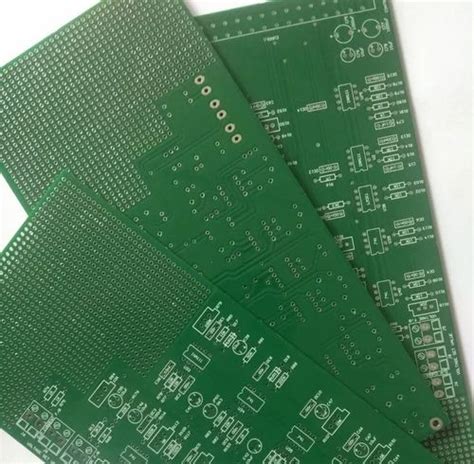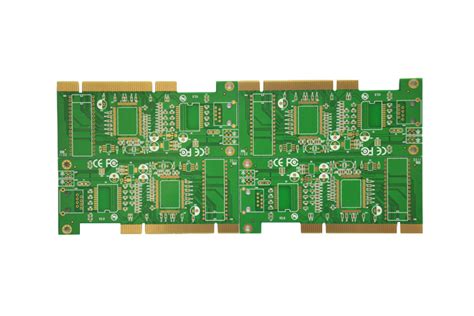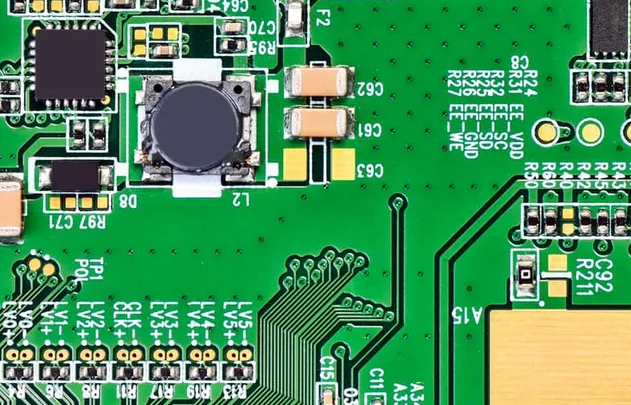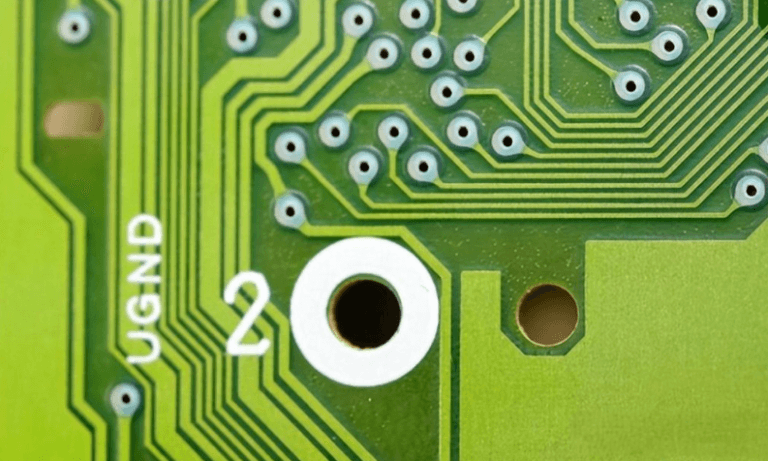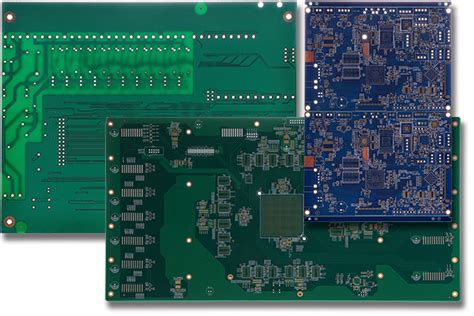High speed signal pcb design
Importance Of Impedance Control In High-Speed Signal PCB Design
In the realm of high-speed signal PCB design, the importance of impedance control cannot be overstated. As electronic devices continue to evolve, becoming faster and more complex, the demand for precise signal integrity has become paramount. Impedance control is a critical factor that ensures signals are transmitted with minimal distortion, maintaining the integrity and performance of the entire system. To understand why impedance control is so crucial, it is essential to delve into the nature of high-speed signals and the challenges they present.
High-speed signals, by their very nature, are susceptible to a range of issues that can degrade performance.
These include signal reflections, crosstalk, and electromagnetic interference, all of which can lead to data corruption and system failures. Impedance, which is the measure of opposition that a circuit presents to the flow of alternating current, plays a pivotal role in mitigating these issues. By maintaining consistent impedance throughout the PCB, designers can minimize signal reflections and ensure that signals are transmitted cleanly and efficiently.
One of the primary reasons impedance control is vital in high-speed PCB design is the need to match the impedance of the transmission line with that of the load.
When there is a mismatch, part of the signal is reflected back towards the source, causing interference and potential data loss. This is particularly problematic in high-speed applications where even minor reflections can lead to significant performance degradation. By carefully controlling the impedance, designers can ensure that the maximum amount of signal power is transferred to the load, reducing the likelihood of reflections and maintaining signal integrity.
Moreover, impedance control is essential for minimizing crosstalk, which occurs when signals in adjacent traces interfere with each other.
In high-speed designs, where traces are often routed in close proximity, crosstalk can become a significant issue. By maintaining consistent impedance, designers can reduce the electromagnetic fields that cause crosstalk, thereby preserving the integrity of the signals. This is particularly important in densely packed PCBs, where space constraints make it challenging to separate traces adequately.
In addition to mitigating reflections and crosstalk, impedance control also plays a crucial role in reducing electromagnetic interference (EMI).
High-speed signals can generate significant electromagnetic fields, which can interfere with other components and systems. By ensuring that the impedance is controlled and consistent, designers can minimize these fields, reducing the potential for EMI and ensuring that the PCB operates reliably in its intended environment.
Furthermore, the importance of impedance control extends to the manufacturing process.
Variations in impedance can arise from differences in trace width, dielectric material, and layer thickness, among other factors. By specifying precise impedance requirements, designers can work closely with manufacturers to ensure that these parameters are tightly controlled, resulting in a PCB that meets the desired performance specifications.
In conclusion, impedance control is a fundamental aspect of high-speed signal PCB design, playing a critical role in ensuring signal integrity and system reliability. By addressing issues such as signal reflections, crosstalk, and electromagnetic interference, impedance control helps maintain the performance of high-speed electronic devices. As technology continues to advance, the need for precise impedance control will only become more pronounced, underscoring its importance in the design and manufacturing of modern PCBs.

Techniques For Minimizing Crosstalk In High-Speed PCB Layouts
In the realm of high-speed printed circuit board (PCB) design, minimizing crosstalk is a critical consideration to ensure signal integrity and optimal performance. Crosstalk, the unwanted coupling of signals between adjacent traces, can lead to data corruption and system malfunctions, particularly in high-speed applications. Therefore, understanding and implementing effective techniques to mitigate crosstalk is essential for engineers and designers working in this field.
To begin with, one of the fundamental strategies for minimizing crosstalk is to maintain adequate spacing between signal traces.
By increasing the distance between traces, the electromagnetic interference that causes crosstalk is significantly reduced. This approach is particularly effective in high-speed designs where the risk of signal coupling is heightened. Additionally, employing differential signaling can further mitigate crosstalk. Differential pairs, which consist of two complementary signals, are less susceptible to external noise and interference, thereby enhancing signal integrity.
Moreover, the use of ground planes is another effective technique in reducing crosstalk.
Ground planes act as a shield, providing a return path for signals and minimizing the loop area, which in turn reduces the inductive coupling between traces. It is advisable to place ground planes adjacent to signal layers, as this configuration helps in containing the electromagnetic fields and preventing them from affecting neighboring traces. Furthermore, ensuring that the ground plane is continuous and free of splits or gaps is crucial, as discontinuities can exacerbate crosstalk issues.
In addition to spacing and grounding strategies, the routing of signal traces plays a pivotal role in crosstalk mitigation.
Designers should aim to route high-speed signals on internal layers sandwiched between ground planes, a technique known as stripline routing. This method provides excellent isolation and reduces the potential for crosstalk. When stripline routing is not feasible, microstrip routing on outer layers can be employed, but with careful attention to trace spacing and ground plane proximity.
Transitioning to another important aspect, the use of controlled impedance traces is vital in high-speed PCB layouts.
Controlled impedance ensures that the characteristic impedance of the trace matches the source and load, minimizing reflections and signal distortion. This practice not only aids in reducing crosstalk but also enhances overall signal quality. Designers should utilize simulation tools to model and verify the impedance of traces, making necessary adjustments to trace width and spacing to achieve the desired impedance.
Furthermore, the implementation of termination techniques can also contribute to crosstalk reduction.
Properly terminating signal lines with resistors can dampen reflections and prevent signals from coupling into adjacent traces. Series and parallel termination are common methods, each with its own advantages depending on the specific application and design constraints.
Lastly, it is essential to consider the impact of via placement on crosstalk. Vias, which connect different layers of a PCB, can introduce parasitic inductance and capacitance, potentially increasing crosstalk. To mitigate this, designers should minimize the number of vias in high-speed signal paths and ensure that return paths are as short and direct as possible.
In conclusion, minimizing crosstalk in high-speed PCB layouts requires a comprehensive approach that encompasses trace spacing, grounding, routing, impedance control, termination, and via management. By carefully considering these factors and employing best practices, designers can significantly enhance signal integrity and ensure the reliable performance of high-speed electronic systems.

Best Practices For Layer Stackup In High-Speed Signal PCBs
In the realm of high-speed signal printed circuit boards (PCBs), the layer stackup plays a pivotal role in ensuring signal integrity and overall performance. As electronic devices become increasingly complex, the demand for high-speed data transmission has surged, necessitating meticulous attention to the design and construction of PCBs. A well-considered layer stackup is essential for minimizing electromagnetic interference (EMI), reducing signal loss, and maintaining signal integrity across the board. To achieve these objectives, several best practices should be adhered to during the design phase.
Firstly, it is crucial to determine the number of layers required for the PCB.
This decision is influenced by factors such as the complexity of the circuit, the number of signals, and the need for power and ground planes. A multi-layer stackup is often preferred for high-speed applications, as it allows for better separation of signal layers and power planes, thereby reducing crosstalk and EMI. Typically, a four-layer stackup is the minimum for high-speed designs, with additional layers being added as necessary to accommodate more complex circuits.
Once the number of layers is established, the arrangement of these layers becomes paramount.
A common practice is to position the power and ground planes adjacent to each other, which creates a low-inductance path for return currents and enhances the board’s ability to suppress EMI. This configuration also facilitates the use of microstrip and stripline transmission lines, which are essential for maintaining signal integrity at high frequencies. Microstrip lines, located on the outer layers, are exposed to air and have a higher impedance, while stripline configurations, sandwiched between two ground planes, offer better shielding and lower impedance.
In addition to layer arrangement, the choice of materials is a critical consideration in high-speed PCB design.
The dielectric material used between layers affects the board’s impedance and signal propagation speed. Materials with a low dielectric constant and low loss tangent are preferred, as they minimize signal attenuation and dispersion. FR-4 is a common choice for many applications, but for higher frequency designs, materials such as Rogers or Teflon may be more suitable due to their superior electrical properties.
Furthermore, maintaining consistent impedance throughout the PCB is vital for high-speed signal integrity.
Impedance mismatches can lead to signal reflections, which degrade performance. To achieve controlled impedance, careful attention must be paid to trace width, spacing, and the dielectric thickness between layers. Design tools that simulate signal behavior can be invaluable in optimizing these parameters and ensuring that the PCB meets the desired specifications.
Thermal management is another aspect that cannot be overlooked in high-speed PCB design.
As signal speeds increase, so does the potential for heat generation, which can adversely affect performance and reliability. Incorporating thermal vias, heat sinks, and appropriate copper thickness can help dissipate heat effectively, ensuring the board operates within safe temperature limits.
In conclusion, designing a high-speed signal PCB requires a comprehensive understanding of layer stackup best practices. By carefully selecting the number of layers, arranging them strategically, choosing appropriate materials, and ensuring consistent impedance, designers can create PCBs that meet the demands of modern high-speed applications. Additionally, addressing thermal management concerns is essential to maintain the board’s performance and longevity. By adhering to these guidelines, engineers can optimize their designs for the challenges posed by high-speed signal transmission.
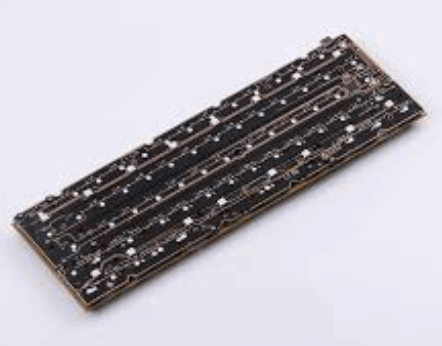
Effective Routing Strategies For High-Speed Signal Integrity
In the realm of modern electronics, the demand for high-speed signal transmission has become increasingly prevalent, necessitating meticulous attention to printed circuit board (PCB) design. Effective routing strategies are paramount to ensuring signal integrity, which is crucial for the optimal performance of high-speed circuits. As signal frequencies increase, the challenges associated with maintaining signal integrity become more pronounced, requiring designers to adopt a comprehensive approach to PCB layout.
To begin with, understanding the fundamental principles of signal integrity is essential.
Signal integrity refers to the preservation of the quality of electrical signals as they traverse the PCB. High-speed signals are susceptible to various forms of degradation, including signal reflection, crosstalk, and electromagnetic interference (EMI). These issues can lead to data corruption, increased error rates, and overall system instability. Therefore, implementing effective routing strategies is vital to mitigate these potential pitfalls.

One of the primary considerations in high-speed PCB design is the management of impedance.
Impedance mismatches can cause signal reflections, which degrade signal quality. To address this, designers must ensure that the characteristic impedance of the transmission lines is consistent throughout the PCB. This can be achieved by carefully selecting the trace width, spacing, and dielectric material. Additionally, maintaining uniform trace geometry and avoiding abrupt changes in trace width can help minimize impedance discontinuities.
Moreover, the concept of controlled impedance routing is integral to high-speed PCB design.
Controlled impedance involves designing transmission lines with specific impedance values to match the source and load. This practice reduces signal reflections and enhances signal integrity. To implement controlled impedance routing, designers often utilize simulation tools to model and optimize the PCB layout before fabrication. These tools allow for precise adjustments to trace dimensions and layer stack-ups, ensuring that the desired impedance is achieved.
In addition to impedance management, minimizing crosstalk is another critical aspect of high-speed signal routing.
Crosstalk occurs when signals on adjacent traces interfere with each other, leading to signal distortion. To mitigate crosstalk, designers should maintain adequate spacing between traces and employ differential signaling where possible. Differential pairs, which consist of two complementary signals, are less susceptible to crosstalk and offer improved noise immunity. Furthermore, routing differential pairs with consistent spacing and length matching is essential to preserve signal integrity.
Transitioning to the topic of layer stack-up, the arrangement of PCB layers plays a significant role in high-speed design.
A well-planned layer stack-up can enhance signal integrity by providing effective signal return paths and reducing EMI. Typically, high-speed PCBs employ multiple layers, with dedicated ground and power planes to provide low-inductance paths for return currents. Placing signal layers adjacent to ground planes helps contain electromagnetic fields and minimizes EMI.
Furthermore, the use of vias, which are vertical interconnections between PCB layers, should be carefully managed. Vias introduce parasitic inductance and capacitance, which can degrade signal quality. To mitigate these effects, designers should minimize the number of vias in high-speed signal paths and use blind or buried vias when necessary. Additionally, ensuring that vias are properly back-drilled can reduce their impact on signal integrity.
In conclusion, effective routing strategies are indispensable for maintaining high-speed signal integrity in PCB design. By focusing on impedance management, crosstalk reduction, and optimal layer stack-up, designers can mitigate the challenges associated with high-speed signal transmission. As technology continues to advance, the importance of these strategies will only grow, underscoring the need for meticulous attention to detail in PCB design. Through careful planning and execution, designers can ensure that their high-speed circuits perform reliably and efficiently.

